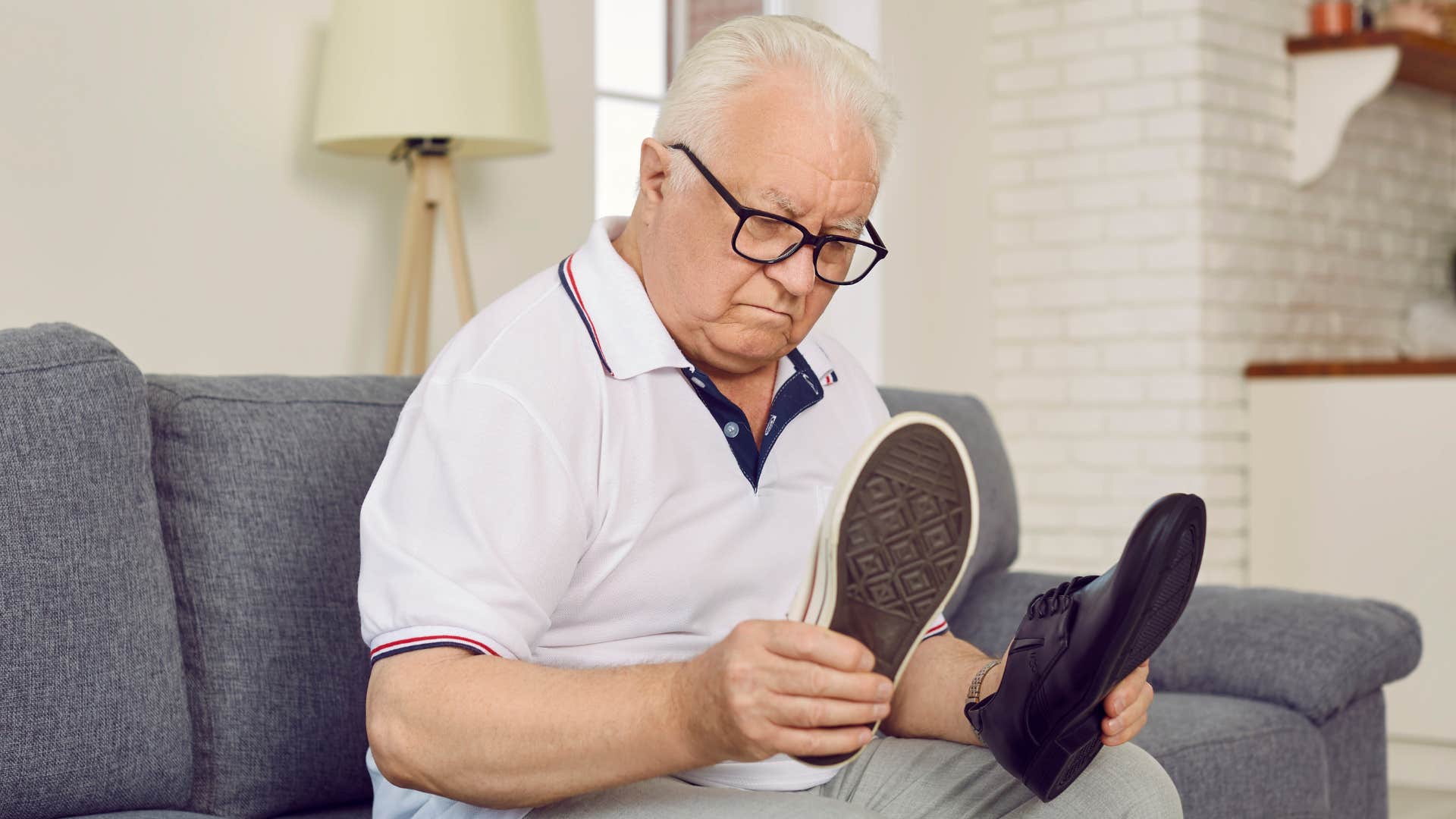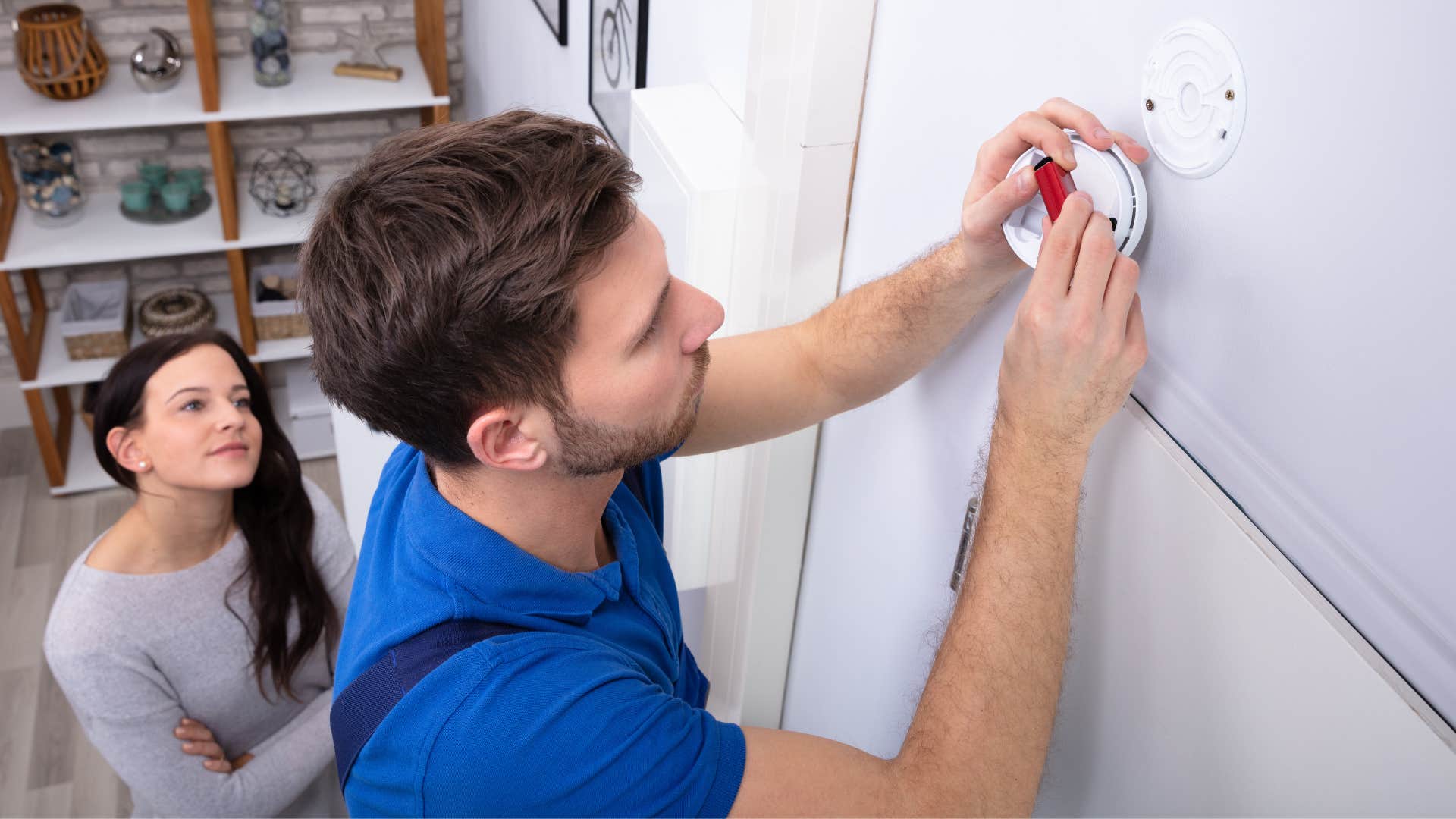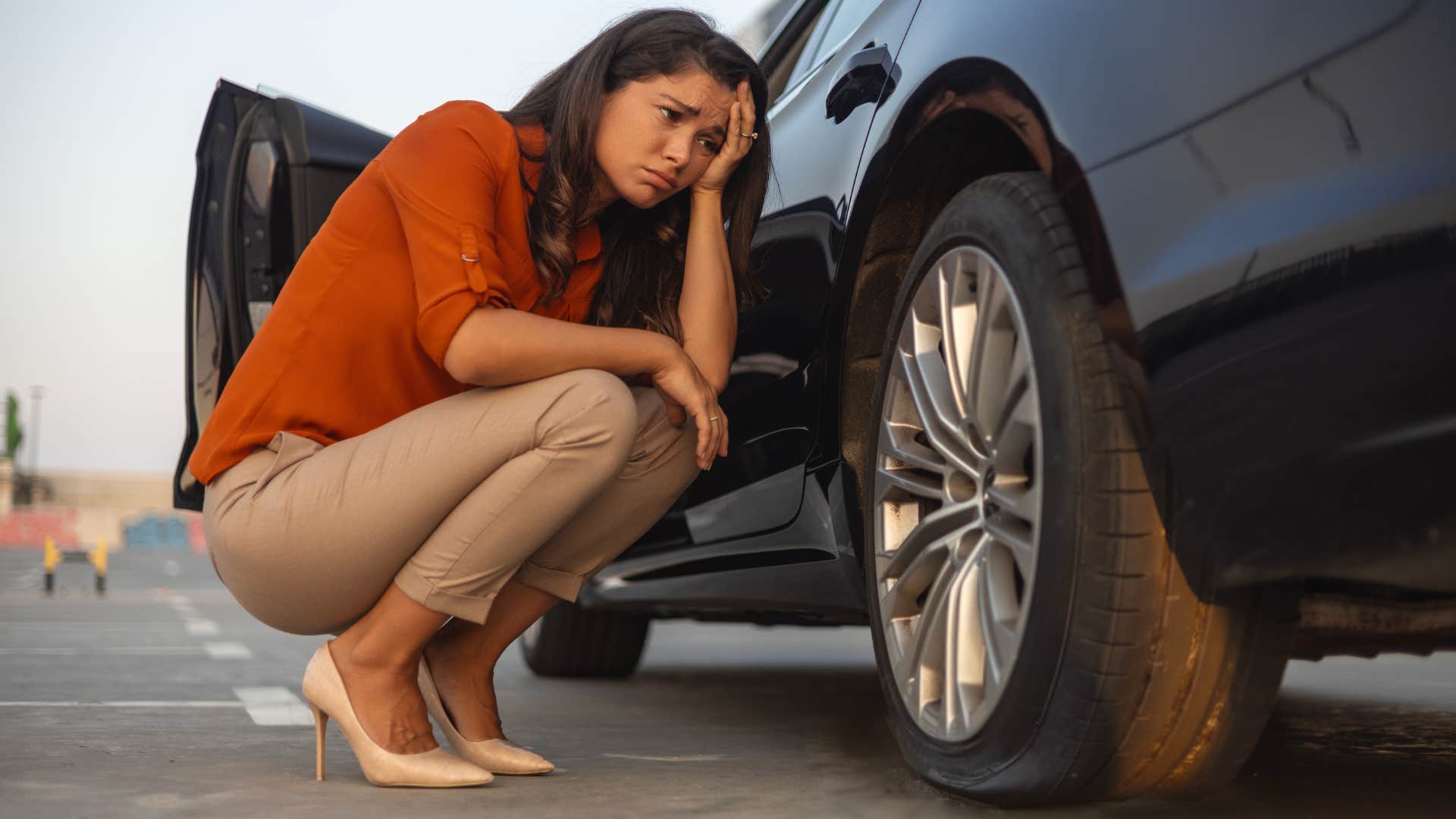11 Things Frugal People Keep For Years But Probably Need To Replace
Nothing lasts forever, even if it saves you a few bucks.
 Pixel-Shot | Shutterstock
Pixel-Shot | Shutterstock Being frugal means getting the most value out of every dollar, which can involve holding onto items well past their prime. Many budget-conscious people pride themselves on stretching the lifespan of everything from appliances to clothing and resisting the urge to replace things just because they're old. To them, it's a smart financial strategy, but there comes a time when things need replacing, no matter how hard you try to hold on to them.
There are some things frugal people keep for years but probably need to replace, usually because they can impact our safety and hygiene. From purchasing new toothbrushes to replacing the tires on your car, some things aren't meant to last forever, especially if they are needed in an emergency. Frugal people would keep these things forever if they could, but it's likely not a good idea.
Here are 11 things frugal people keep for years but probably need to replace
1. Mattresses and pillows
 Nomad_Soul | Shutterstock
Nomad_Soul | Shutterstock
Having a quality mattress or pillow can be a big expenditure, so it's understandable why a frugal person might hesitate to replace it. However, just because something still holds doesn't mean it's good for you. You have poor sleep quality and posture because you refuse to replace your mattress, which is something recommended to be changed every 7 to 10 years.
Mattresses sag and lose their ability to support the body properly, leading to aches and back pain. Pillows flatten out and, if not properly washed, can collect allergens or dust mites. Frugal people will ignore the signs in favor of saving money but complain through the pain that their bodies are in.
2. Cookware
 Andriiii | Shutterstock
Andriiii | Shutterstock
According to testing from Consumer Reports, older pans or those with damaged coatings can pose a risk to polyfluoroalkyl substances (PFAS), which can lead to liver damage, while newer pans may be free from certain harmful chemicals. Similarly, warped pans won't distribute heat evenly which can lead to frustrating cooking results. Cast iron and stainless steel may last longer, but even those should be checked for damage or excessive wear.
Replacing key pieces of cookware just means putting your frugality on the back burner — literally and figuratively — temporarily for long-term safety reasons. Investing in a few quality items that will last another decade can actually save money over time. Knowing when to retire that beloved frying pan can be a wise yet practical move for any frugal individual.
3. Toothbrushes
 Ground Picture | Shutterstock
Ground Picture | Shutterstock
Frugal people are masters of stretching the lifespan of an everyday object, but one thing they hold onto for far too long is their toothbrush. When the bristles become frayed, they make it less effective at cleaning your gums and teeth. This leaves behind plaque and bacteria that can lead to cavities or even worse gum disease.
According to research published in the International Dental Journal, most dentists recommend replacing toothbrushes every 3 to 4 months. Even if the brush still looks intact, it may harbor bacteria and lose its cleaning efficiency over time. This is especially important after illness, as lingering germs on a toothbrush can reinfect you or others in the household. For frugal-minded folks, the good news is that toothbrushes are relatively inexpensive.
4. Makeup and skincare products
 Vagengeim | Shutterstock
Vagengeim | Shutterstock
It's not uncommon to find a decade-old eyeshadow palette or a moisturizer that's well past its expiration date hiding in the medicine cabinet. Unfortunately, these are some of the things frugal people keep for years but probably need to replace, as most products have expiration dates for a reason.
Using these expired items can do more harm than good. Old mascara can be a breeding ground for bacteria that may lead to eye infections. Dermatologist Melissa Babcock, MD advises replacing mascara every 3 to 6 months, liquid foundations and concealers every 6 months, and powder-based products like blush and eyeshadow every 2 years.
To stay safe, it's a good idea to regularly check expiration dates and look for signs of spoilage like changes in texture, smell or color. In fact, many makeup products have expiration dates underneath the container it comes in.
5. Shoes
 Studio Romantic | Shutterstock
Studio Romantic | Shutterstock
Frugal people are known for squeezing every last bit of life out of their belongings, and shoes are no exception. A well-made pair of shoes can last for years with proper care, and stretching their lifespan is seen as a win, but even the sturdiest footwear has its limits.
Old shoes may no longer provide the support your feet need, especially if the soles are worn down or the cushioning is compressed. Worn-out running shoes can alter gait patterns and increase plantar pressures, which leads to foot pain or potential injuries.
While repairs like resoling or replacing insoles can extend usability, there comes a point when it's less costly and healthier to just invest in a new pair. Despite believing in saving a dollar, even the most frugal people have to know when to let something go for a much better upgrade long-term.
6. Clothes
 fizkes | Shutterstock
fizkes | Shutterstock
Getting rid of old clothing becomes a major issue for frugal individuals, who see some form of sentimental value in the clothing they buy. Rather than replacing it with something new, they will make excuses on why they shouldn't get rid of it.
To help them move forward, it's worth evaluating if the stretched-out sweaters or faded shirts still serve a purpose to them, or if they can be used to make new outfits. Old clothes, especially undergarments and items that experience daily wear, will lose their fit, elasticity, and support. This will eventually impact both comfort and hygiene.
Replacing clothes doesn't mean splurging. There are plenty of sales and clothing swaps that offer affordable ways to update your wardrobe without compromising your frugal values.
7. Smartphones
 DimaBerlin | Shutterstock
DimaBerlin | Shutterstock
Modern phones are expensive, which can make frugal people second-guess whether it's worth buying a new one if the old one still works. However, after several years of use, even the most well-maintained smartphones begin to show signs of aging. Slower performance, shorter battery life, and lack of software updates can impact usability and security.
Many older phones no longer receive operating system or security updates, leaving them vulnerable to hacking and malware. Investing in a newer model every four to five years can strike a balance between saving costs and making life a little easier. It ensures that frugal people stay protected, connected, and efficient without falling prey to unnecessary spending.
8. Hairbrushes and combs
 Depiction Images | Shutterstock
Depiction Images | Shutterstock
People who are frugal hold onto everyday items like hairbrushes and combs far longer than they should, seeing them as low-priority expenses. After all, if the brush still runs through your hair, why bother to replace it?
It's easy to think of these grooming tools as nearly indestructible, especially when compared to electronics or clothing that show wear more clearly. However, hairbrushes and combs will collect build-up over time from hair products, oils, and dead skin cells. Even with regular cleaning, the bristles can bend and the beaded tips can fall off if too much force is applied.
Continuing to use them can irritate the scalp and contribute to dandruff. These issues might cost more in the long run to fix than a new brush would.
9. Smoke detectors
 Andrey_Popov | Shutterstock
Andrey_Popov | Shutterstock
Frugal people are great at making things last, but some household items have hidden expiration dates and smoke detectors are one of them. These life-saving devices are easy to forget about once installed, quietly collecting dust on the ceiling. Many would even go as far as to allow it to beep consistently rather than simply change the batteries.
According to the National Institute of Standards and Technology, approximately 20% of homes with smoke alarms have non-operational devices, often due to dead or missing batteries. Batteries should be changed yearly, but the entire unit ages as well.
A frugal mindset can lead someone to overlook this, especially when the detector appears physically fine. However, it's a small investment for peace of mind and one that could save lives.
10. Car tires
 Photoroyalty | Shutterstock
Photoroyalty | Shutterstock
One of the important things frugal people keep for years but probably need to replace is their car tires. Despite many believing tires last for years and years, they get damaged over the course of use, even if they appear to be in good condition.
Rubber naturally breaks down due to exposure to heat, sunlight, and oxygen. This can lead to cracking, hardening, and reduced traction. The National Highway Traffic Safety Administration advises that tires should be replaced every 6 to 10 years, regardless of tread depth due to the natural degradation of rubber over time.
Delaying replacement to save money might seem smart, but old tires can be a hidden danger. Worn-out or aged tires increase the chances of blowouts, poor handling in wet conditions, and longer stopping distances. Replacing them on time isn't just a safety investment, it can also prevent costlier accidents.
11. Plastic food containers
 chalermphon_tiam | Shutterstock
chalermphon_tiam | Shutterstock
Every frugal person wants to hold onto their plastic food containers way past their prime. And while it may seem like they're saving money, Tupperware is one of the things frugal people keep for years but probably need to replace.
Aged plastic containers pose hidden risks. Research from 2023 found that microwaving plastic containers can release up to 4 million microplastics and 2 billion nanoplastics in just 3 minutes, and exposures to these particles can harm kidney cells.
Replacing old containers with newer and safer options doesn't have to break the bank. Many affordable sets are durable and longer-lasting than the plastic alternatives. In the long run, upgrading these items can be healthy and budget-friendly.
Sylvia Ojeda is an author with a decade of experience writing novels and screenplays. She covers self-help, relationships, culture, and human interest topics.

